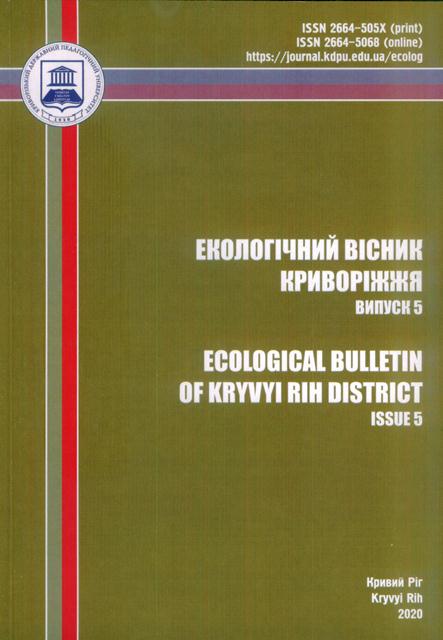ВМІСТ МАКРОНУТРІЄНТІВ ТА ВАЖКИХ МЕТАЛІВ У ЛИСТКАХ ДЕРЕВ З ДЕВАСТОВАНИХ ЗЕМЕЛЬ КРИВОРІЗЬКОГО РЕГІОНУ (ЦЕНТРАЛЬНА УКРАЇНА)
DOI:
https://doi.org/10.31812/eco-bulletin-krd.v5i0.4355Keywords:
макронутрієнти; важкі метали; клен ясенелистий;, береза повисла; робінія звичайна; девастовані землі; Криворізький регіонAbstract
Актуальність досліджень була зумовлена необхідністю уточнення біогеохімічних характеристик деревних видів рослин, які природно зростають на девастованих землях. Метою роботи було проведененя порівняльного аналізу вмісту макропоживних речовин (макронутріентів) та важких металів у листках дерев, що спонтанно поширені на девастованих землях Криворізького регіону. Дослідження проводилося на Петровському відвалі, центральна частина Криворізького залізорудного та металургійного регіону (Дніпропетровська область, Україна). Вміст макронутрієнтів (K, Ca, Mg, P та S) і важких металів (Fe, Mn, Zn, Cu, Pb та Cd) у листках трьох видів дерев (клен ясенелистий Acer negundo L., береза повисла Betula pendula Roth., робінія звичайна Robinia pseudoacacia L.) були зібрані на девастованих землях. Встановлено, що вміст макроелементів (K, Ca, Mg, P, S) та важких металів (Fe, Mn, Zn, Cu, Pb, Cd) в листках деревних видів рослин маніфестує важкі екологічні умови на девастованих землях Петровського відвалу.
Дерева, які природно зростають на цьому відвалі, мають очевидну нестачу поживних речовин (особливо К і Р) та надлишок токсичних металів (особливо Fe, Mn та Zn). Беручи до уваги виявлені значення оптимальних концентрацій макронутрієнтів та виявлений вміст важких металів у листках, ми припускаємо, що клен ясенолистий та робінія звичайна сарана (в порівнянні з березою повислою) більш стійкі до геохімічних умови девастованих земель.


